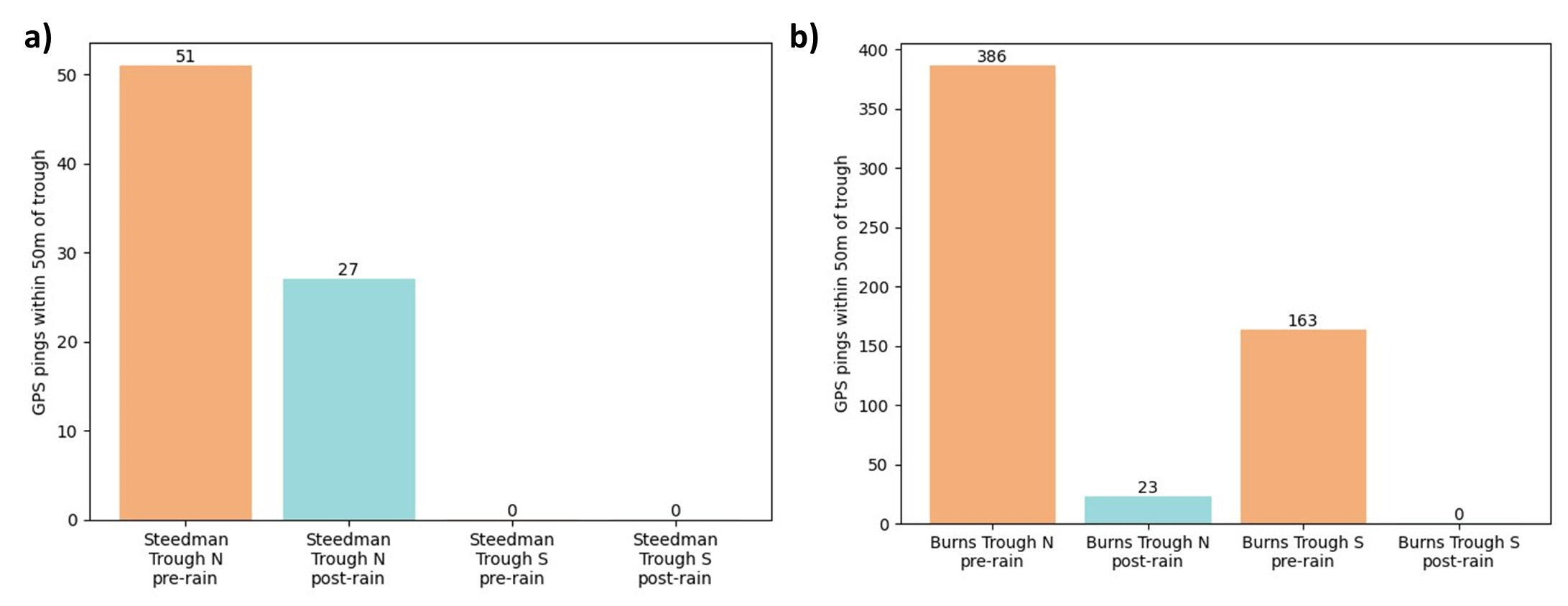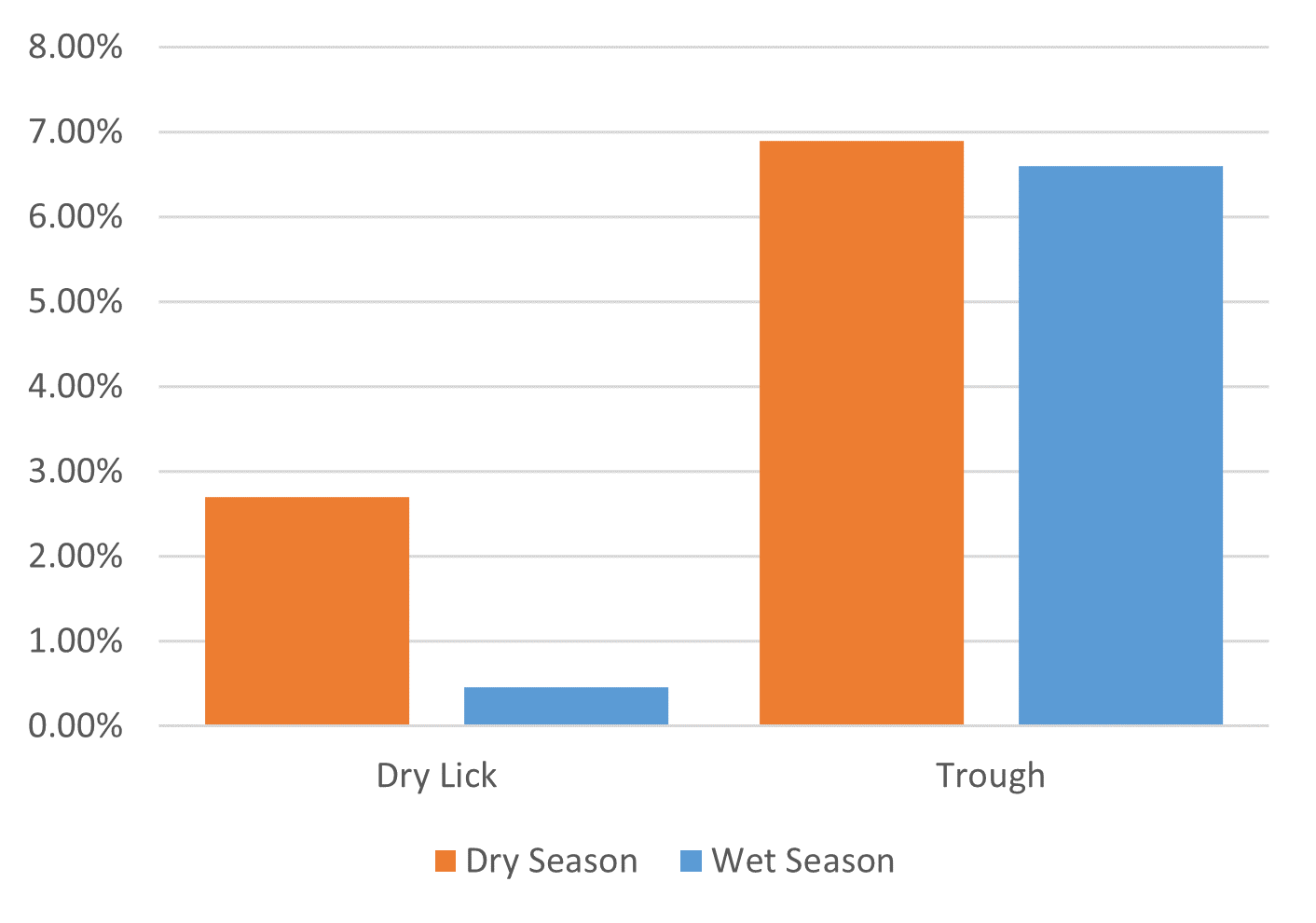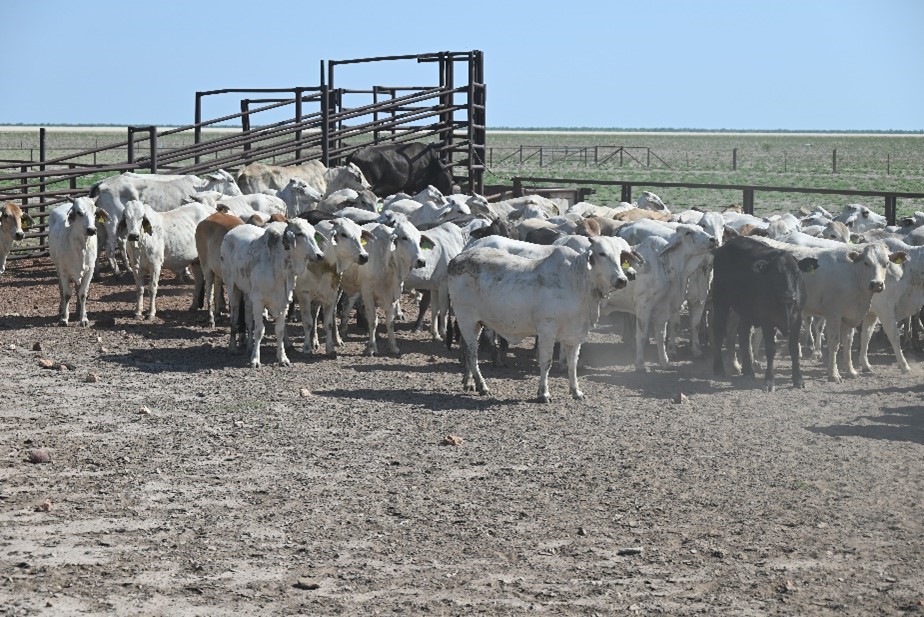Providing mineral supplementation via water (Producer Demonstration Sites)
Supplementation of extensively managed beef breeding herds to overcome mineral deficiencies and improve animal performance is beneficial, but can also be costly. Supplementation decisions should be carefully considered to ensure that the benefits in terms of cattle performance exceed supplementation costs. Water medication is one of the cheaper methods.
Supplementation via water medication is one of the cheaper methods of supplementation. It gives even supplement intake and ensures that animals receive the appropriate amount of supplement for their body weight, as it overcomes issues with shy feeding and gorging. Furthermore, where cattle regularly drink from water troughs during the wet season it is a way of providing consistent phosphorus (P) supplementation to cattle during the wet season, which can be challenging when paddocks are often inaccessible for long periods of time and many forms of P supplements need to be protected from rainfall.
Urea can be safely supplemented through water medication when properly managed, allowing urea supplementation to continue during “shoulder seasons” when the protein content of pasture may be low but the chance of rain makes supplementing with urea loose licks and blocks risky. Delivery of supplement through water medication allows supplementation to continue year-round, more consistently and efficiently. Water medication technology is currently not widely used, however recently there have been improvements in the supplement composition and delivery systems that have overcome a lot of the previous issues that may have deterred people from using it. It provides an opportunity for the remote control of dose rates in quick response to changes in seasonal conditions, but does require a certain level of management and technical skills to maintain.
Little is known about how cattle in northern Australia consume water from troughs when they also have access to surface water, particularly after a rain event and how frequently they return to the water medicated trough or to consume other forms of supplement.
This Producer Demonstration Site (PDS) investigated whether mineral supplements can be effectively provided through water medication systems without compromising production, and looked at the effectiveness of water medication and cattle behaviour through the wet season.
Objectives
- Demonstrate that year-round supplementation via water medication can be successfully implemented at a commercial scale without negatively impacting the productivity of cattle.
- Demonstrate that water medication is an effective method of addressing phosphorus deficiency during the wet season.
- Conduct a cost benefit analysis to determine the relative economic performance of automatic electronic water supplementation compared to the existing method of supplementation on individual properties.
- Use GPS livestock tracking equipment to compare the frequency of livestock access to medicated water troughs and lick blocks during the wet and dry season.
- Increase the awareness, knowledge and confidence of NT producers in water medication systems through various extension platforms and events.
The Producer Demonstration Sites
In 2021, two MLA producer demonstration sites were established in collaboration with the Northern Territory Department of Industry, Tourism and Trade and DIT AgTech Ltd.
A number of factors resulted in data collected during the first year (up to the end of the 2021/22 wet season) not being able to be used to effectively evaluate the trial treatments. These factors included; cattle having to be moved due to drought conditions, inconsistencies in data collection, technical issues and multiple handovers of the project due to unforeseen staff changes.
In 2022, the PDS was reviewed and ‘started over’ so that more accurate results could be gathered in the second year. Summaries of the PDS methods in each year are below:
Method
Year 1 (2021/22)
At the Barkly region site, 166 breeders were assigned to a ‘Medicated’ group (supplemented via water), and 166 assigned to the ‘Control’ group (control treatment), which were supplemented using the property’s usual practice (loose lick mineral supplementation). At the Katherine region site, 223 breeders were assigned to the Medicated group and 149 assigned to the Control group.
When inducted into the trial, animals were weighed, body condition score (BCS) was recorded and a base phosphorus status was determined by collecting blood samples from 50 animals from each group to measure plasma inorganic phosphorus (PiP). Ten animals from each treatment group were fitted with GPS collars to record the proximity and frequency of visitation of animals to the water trough and or lick supplement. The amount and costs of supplement distributed to the Medicated treatment was provided in reports from DIT AgTech, and the amount and costs of dry lick distributed was recorded by the property.
Following the 2021 dry season and 2021/22 wet season, weights, BCS and PiP were recorded and analysed. Re-conception rates and weaning percentage was recorded for one property, but sufficient data was not available from the other property. GPS data was downloaded from the GPS collars that were able to be retrieved.
Year 2 (2022/23)
Two new paddocks were selected at the Barkly site for the Medicated treatment (1700ha) and Control treatment (1500ha). Both paddocks had 2 water troughs, and water medicators were installed at both troughs in the Medicated treatment’s paddock. Supplement was directly injected into the trough line to ensure no other troughs were contributing to the intake data. The water medicators (uDOSE) were maintained by DIT AgTech and could be remotely monitored via an online dashboard (uHUB). Water flow meters were placed in the Control paddock to measure water intake for comparison. Soil P tests and pasture assessments were conducted in both paddocks.
Two hundred PTIC first-calf heifers were inducted in May 2022, with 100 allocated to each treatment. Weights and BCS were recorded at entry, and GPS collars placed on 5 animals in each treatment. Blood samples were collected from 20 animals in each treatment for blood PiP testing. Faecal samples were taken monthly (where possible) for NIRS analysis of diets, including phosphorus, crude protein and digestibility. Following the 2022 dry season and 2022/23 wet season, GPS data, weights, BCS and PiP were recorded and analysed.
The PDS site in the Katherine region was not able to continue for a second year.
Results
Year 1 summary
While we cannot draw definite conclusions from the first year’s data, we can report on the experience of setting up new water medication systems.
In the Medicated treatment, the water and supplement intake of the cattle was recorded by the water medicator (uDOSE). During the first year, the data could not be seen in real-time by the project management team, so updates were provided by DIT AgTech or from manual checking of the units. This increased the risk of faults going un-noticed, and there were cases on both properties where that did happen (due to a range of challenges) meaning those cattle were not supplemented for significant periods of time. This hasn’t been a problem since, as all collaborators have access to the uHUB online dashboard and are able to see real-time intakes and uDOSE information and alarms. There was also evidence of lost satellite connection by the uDOSE in the data recorded from the first year, which DIT AgTech has addressed by incorporating internal memory into the uDOSE.
Due to these issues, the amount of supplement that was consumed by cattle in the first year cannot be confirmed, therefore, other measures such as costs and cattle performance can’t be used to compare supplementation methods for the first year.
The GPS data from the first year varied between the different properties and paddocks in the amount of time cattle would go without visiting a trough. One paddock in the Barkly showed periods of 3–4 days with no trough visits by collared cattle during the wet season, whereas one paddock in the Katherine region had periods of over 10 days at a time during the wet season where no collared cattle visited a trough.
Year 2 results
Using water medication technology
During the second year (2022-2023), the water medicators were monitored remotely by project staff and data was available in real-time. The few alerts from the water medicators that were received were acted on very quickly with the help of the uHUB dashboard. The exception was an over-estimate of water intake from one uDOSE for one month. The medicator was still supplementing, but water intake per head appeared much higher than it was for this period. This was resolved easily by re-starting the uDOSE.
Supplement intakes
As shown in Table 1, the supplement intake differed between treatments and phosphorus intake during the wet season appeared higher in the Control treatment. However, Control treatment “intake” may include supplement that was actually wastage.
Table 1. A comparison of the nutrient intakes of cattle in each treatment. This assumes all supplement was consumed with no wastage.
| Dry season | ||||
| Wet season | ||||
Cattle performance
All cattle gained weight from the 9/05/22 to the 18/05/23, although non-lactating animals gained considerably more weight than lactating animals. The weight gains for the non-lactating animals were: Control = 169kg, Medicated = 134kg. The weight gains for the lactating animals were: Control = 60kg, Medicated = 37kg. Differences between treatments were only significant in lactating cattle, where the Control treatment’s average weight gain was 22.7kg more than the Medicated treatment. However, this may have been due to a higher grazing pressure in the Medicated paddock. There were no statistical differences between treatments for body condition score, weaner weight or weaning rate.
Costs
The cost comparison shown in Figure 1 can only be used as a guide, as the costs of supplementation will vary greatly between properties and not all costs (e.g. equipment) were included in the Control treatment calculation. A cost-benefit analysis would not be accurate without accounting for paddock and supplement/nutrient intake differences, or without continuing for more than one year. However, in this scenario, in this particular year, the costs (dollars per head per day) for each treatment were as shown in Figure 1.

GPS data – water and supplement intake behaviour
Five animals in each paddock were fitted with GPS collars to monitor differences in trough and supplement visitations. Some collars were lost or had batteries go flat within a couple of months, so the data collected was only from a small number of animals and may not be representative of the whole herd.
In assessing the impact of surface water on how often cattle visited the trough, and therefore how often cattle in the Medicated paddock consumed supplement, a “pre-rain” week and a “post-rain” week were identified. These were either side of a large rainfall event that would have resulted in surface water. As shown in Figure 2, the number of GPS pings <50m from troughs decreased greatly in the week following the rainfall event.

The number of visitations to dry lick in the Control paddock, compared to troughs, was also determined using the total number (%) of GPS pings that occurred within 30m of a lick station or trough (Figure 3). The number of trough visitations was much higher than dry lick visitations in the Control paddock during both the dry and wet season. Also, the reduction in supplement visitations in the wet season compared to the dry season was much greater in the Control treatment than the Medicated (trough) treatment (Figure 3).

Key findings
- This PDS demonstrated the recent improvements in water medication technology, allowing users to remotely monitor and adjust settings on the units,
The liquid supplements were stable in bore water and did not cause blockages or faults, and phosphorus and urea were safely fed via water year-round, - The cattle supplemented via water were productive and their performance was similar to that of cattle supplemented with dry licks. Although we acknowledge that there were confounding factors and that it was not a rigorous comparison of cattle performance between treatments,
- Observations of the behaviour of cattle with GPS collars fitted showed that, as expected, they stopped visiting the trough daily after significant rainfall and also stopped visiting dry lick stations. However, they seemed to take longer to return to visiting the dry lick than they did the trough.
The final report for this PDS will be made available through the MLA website in 2024.
If you would like more information about this PDS, please get in touch with Stacey Holzapfel, NT DITT Pastoral Extension Officer on (08) 8973 9730.
